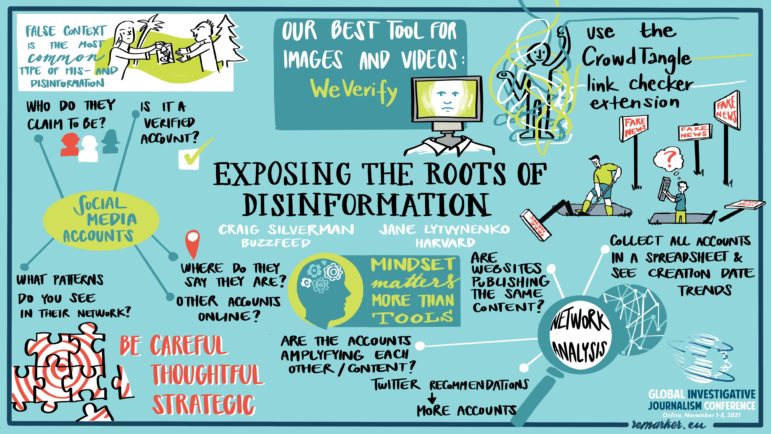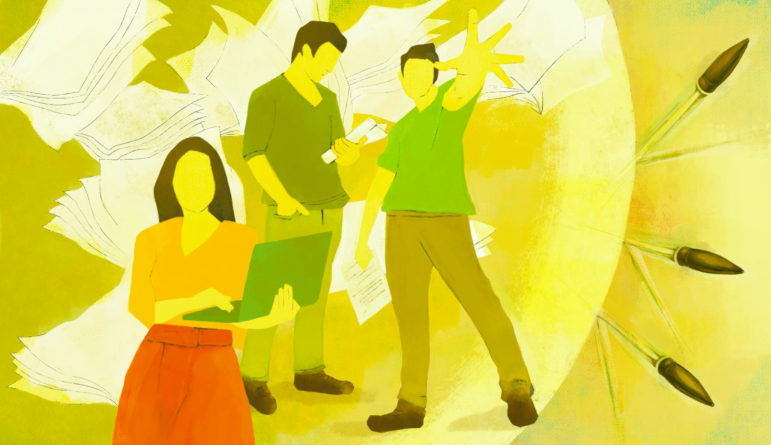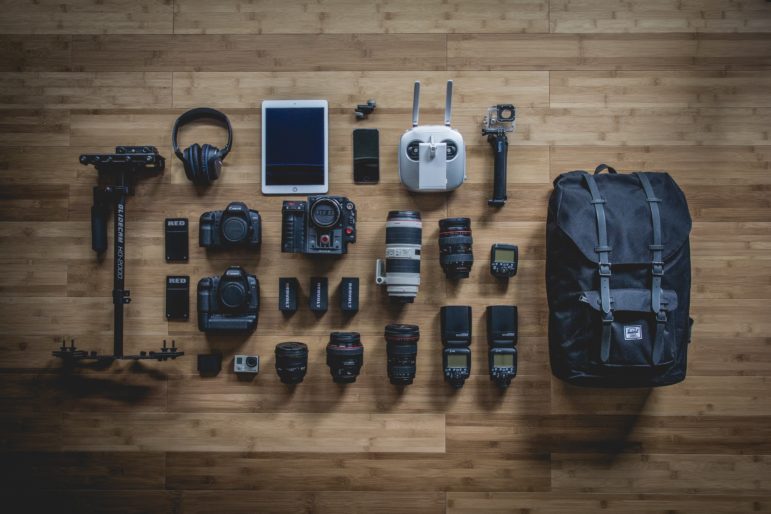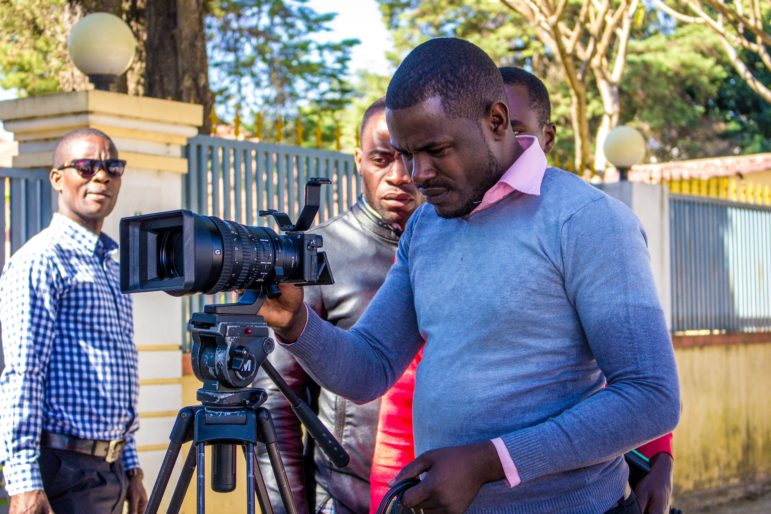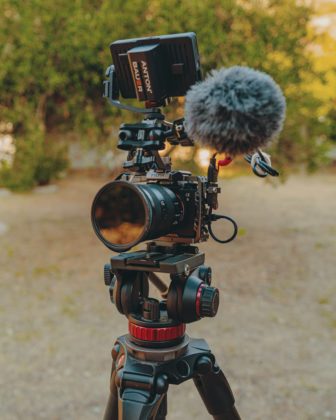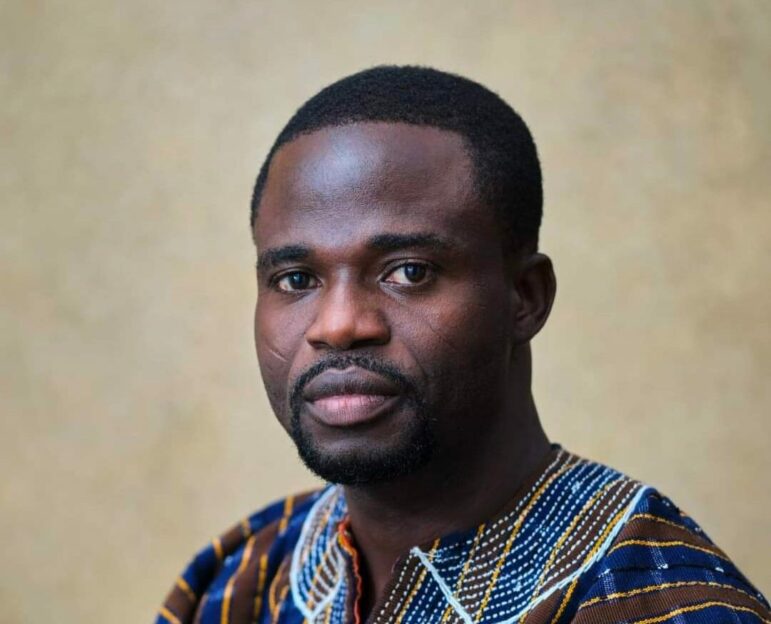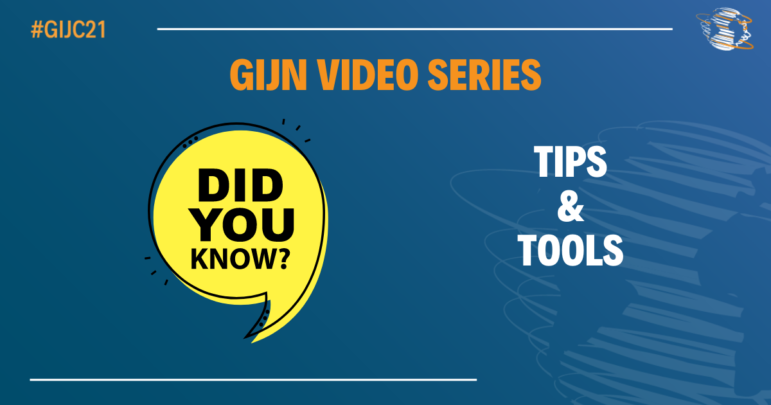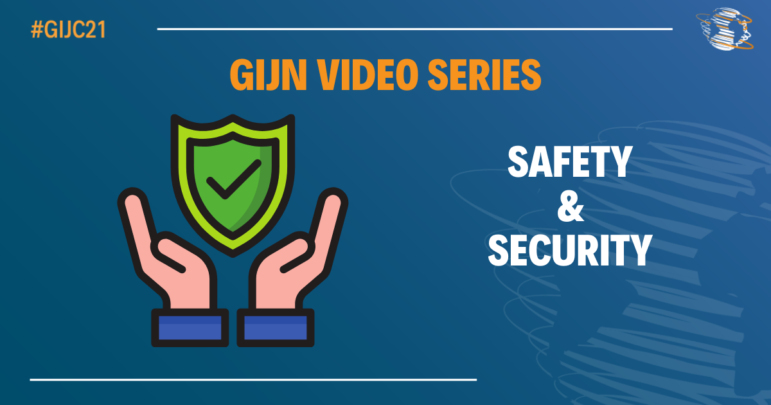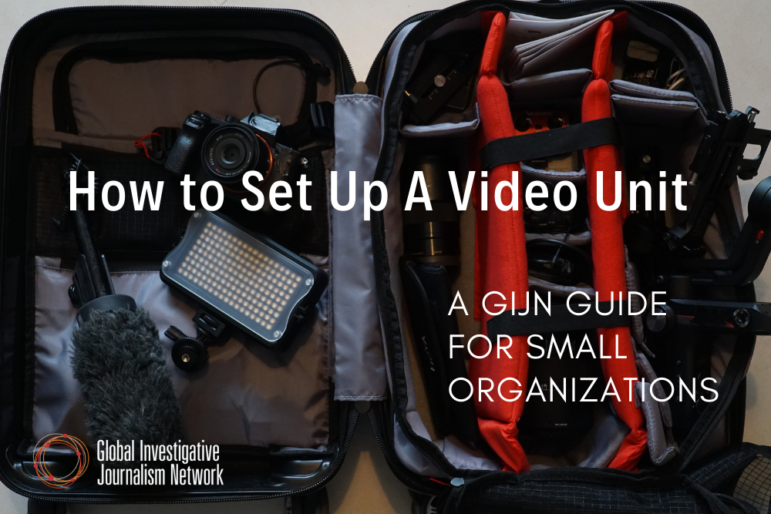

How to Set Up a Video Unit: A GIJN Guide for Small Organizations
When I was finishing grad school more than a decade ago, doing video was the next big thing. Across the world, news organizations were hiring freelance and full-time staff to produce video stories. I already had experience as a producer, so naturally, I bought my first camera and started working as a freelance video journalist. Since then, I’ve had experience working both on large teams —with a dozen people involved in a documentary— and producing, filming, and editing on my own.
For years, the buzzword among media organizations, especially in the United States, was pivoting to video. Some outlets went as far as to replace print with video staff, while they started producing social media-only content.
But even though many outlets built expensive teams, they hadn’t thought through the challenges of revenue and sustainability. As a result, just a few years later, even high-end video teams with millions of views and subscribers, like NBC’s Left Field and CNN’s Great Big Story, shut down.
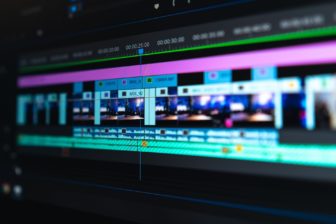
Image: Unsplash
Today, although the hype has died down, video remains an excellent storytelling format that can be scaled to match available budgets. Streaming websites like the dominant player YouTube, or one of the many lesser-known paid-per-view websites, have created new ways for visual journalists to reach a different and sometimes larger or even global audience, magnifying their impact. This is also another way for media organizations to monetize their work.
More on the latest trends in video publishing, read WNIP’s report.
For smaller news outlets — like investigative nonprofits — having a video unit can open doors to work with broadcast networks, which often have bigger budgets than print media. This can be a valuable source of commercial income, from being hired on day-rates and special projects to selling archival footage.
This guide is geared to help small investigative journalism organizations — with modest budgets and few staff members — start producing their first video stories. We’ve divided it into three segments:
Tips to Make Your Shots Look Better
21 Steps To Start Doing Video
Don’t aim from the start for an Oscar nomination or a Netflix distribution deal. It’s okay if your team is small and inexperienced. Expect to make mistakes and keep in mind that there’s a learning curve, as in writing.
1. Start Small
If your staff lacks experience, start thinking visually by integrating photos and videos in your text stories. Also, emphasize multimedia elements early on, right from the pitching phase. Too many print journalists finish their investigation, and only then do they remember they need photos and video, which are often impossible to get at that stage. A few photographs or short clips added in between text or integrated into the background is a good start. Another idea: film an interview with the main subject of your print story.
If there’s a budget, train your staff. But with high-quality cameras on our phones for more than a decade now, there already may be people on your team who can film and photograph quite well, but just need more practice and guidance.
There’s also the option of crowdsourcing your video project. Sabine Krayenbühl, an award-winning and Oscar-nominated Swiss editor and director, recommends taking a strategic approach as soon as you decide on your project’s focus.
“With social media’s importance growing, you can build a following which comes into play when you look for funding in a campaign or for distribution,” explains Krayenbühl, who has used crowdsourcing to fund some of her documentaries. “People are excited to be involved in the process. “You can easily have a Facebook page or Instagram account, [it’s] not even necessary to have a web page.”
Still, crowdsourcing takes time to do it well. Krayenbühl suggests planning out the whole campaign from the beginning, with all the updates and perks included. Also, she says budding filmmakers should take into account the extra costs for any giveaways, and add that to the total amount they want to raise.
“Better to ask for an amount designated for a specific part of the production such as music or composer rights rather than for the whole film,” Krayenbühl explains. “That way people feel they contributed purposefully and know what they were responsible for. It gives them ‘a piece’ of the film.”
2. Build Your Video Strategy
Do your research to find out what opportunities are out there. Here are some things to consider before starting:
- Are there other teams in your region doing video on modest budgets? How are they making money? Also, where is your audience? Online or offline? How large is it? Keep in mind that if you translate videos from your native language audience into English, you could earn more international attention — and possibly revenue.
- How are you going to fund production? For starters, you can apply for reporting grants and include the hiring of freelancers in your expenses. You can also apply for documentary grants.
- Are there commercial outlets willing to buy your work? Local or regional television news shows, for example, or international documentary and news programs? Contracts to provide video content to larger media organizations can help fund your efforts.
- If distributing your own content, how will you offer it? Are free sharing platforms, like YouTube and Amazon Prime, big enough in your country to get the hundreds of thousands of views needed to start getting paid? YouTube, for example, requires 1,000 subscribers and 4,000 watch hours before it starts paying creators, and even then payments are only between US$1-$3 per view. Is there a distribution network in your region? Would people in your region pay to watch this in person in a theater? If you self-broadcast, is there an audience who will pay for access?
These questions will help you create a strategy on how much you should invest in video and whether you should create longer documentaries or stick to shorter ones. Keep in mind, they don’t all need to be answered at once.
If you’re aiming at the digital distribution of your documentaries, make sure to read these tips by Orly Ravid, founder of The Film Collaborative, a US nonprofit focused on distribution and education.
3. Staff or Freelancers?
There are several ways to staff up a video production unit. You can hire a professional video journalist — that’s a single person who will do the producing, reporting, filming, audio recording, and video editing. You can hire freelancers who have those skills. Or you can train your print journalists.
If you have a bigger budget, you can hire several people — either on staff or as freelancers — trained in each role of the process: a producer, a cameraperson, and a video editor. One advantage of working with freelancers is that they typically bring their own equipment so you won’t need to buy gear, although some charge a gear rental fee.
4. Gear
If you decide to buy your own gear, it’s best to consult with the people using it. So if you’re hiring someone to do video, wait for them to come on onboard and get their recommendations before purchasing.
For a basic set-up, you’ll need a camera, shotgun and lavalier microphones, a tripod, and a monopod. Tripods are essential for sit-down interviews. Monopods are good when you need to be versatile and in situations where you don’t have time to set up the tripod — for example, while filming a street protest. A small LED lights is also necessary, to help with lighting mainly when you’re filming indoors.
You’ll then have to choose from these three different types of cameras:
- Professional camcorders have one lens with great built-in focus, NED filters, and two audio inputs.
- DSLR photo cameras can also record video and audio. Many professionals prefer them for their better sensors and compact size, as they fit in a coat pocket. You’ll need to get multiple lenses and ND filters — which you’ll need, for example, for filming during a sunny day. If you want to record from two microphones simultaneously, you’ll also need a small audio mixer.
- Digital cine cameras, which are mainly used for documentaries. These combine attributes of camcorders and photo cameras — you can interchange lenses and also have two audio inputs.
You don’t need to spend a lot to get good-quality video. If there’s zero budget, you can work with mobile phones. Check out our MOJO guide for more information.
5. Create a Style Guide
Just like a style guide for writing, this will be the blueprint for both your full-time and freelance video staff. The guide should include the style you want your videos to follow, how you want them shot, and what kind of graphics and font you want to be used. This will make everything go faster and limit the back and forth with your video editor.
6. Chose Stories that Will Make Good Video
Sit-down interviews are rarely interesting. Find the action in the story you’re investigating and film it.
7. Work Off a Script. Don’t Forget Your Nut Graf
As in writing, your video story will need to have a clear “nut graf” — a tight summary that explains what your investigation is about and why viewers should care. You need a script and a shot list (a list of shots you need to get during a shoot) before you film, so you’re prepared when you’re out in the field. When done filming, you need to transcribe your interviews and document all of the shots you ended up getting. Then you can start putting together the final script that you or a video editor will edit.
8. Test Your Gear and Practice
Make sure to familiarize yourself with the settings of your video and audio equipment — for example, the sensitivity of your microphone. Before going to the field, test to ensure your team and your equipment work well together. During filming, your adrenaline may spike, and if the gear is new or unfamiliar, it’s possible you won’t remember how to adjust the setting for X, Y, or Z.
9. Cultivate Good Working Relations Between Print and Video Journalists
This relationship is often tense since print journalists are often older and less tech-savvy than video journalists, but when it works the stories produced are stronger. Ideally, the video team should participate in the early stages of the investigation. If they join the project too late, they might have missed opportunities to film key interviews and action.
10. Always Be Recording
Some of the best reactions you’ll get from an interviewee are before and after the official interview, when they’re more relaxed. Therefore, as soon as your interviewee walks into the room, get consent and start recording and stop recording only after they exit.
11. Hidden Cameras
The use of hidden cameras is controversial, sometimes dangerous, and should be done with care. Professional standards state that one should resort to undercover shooting only when the information can’t be obtained through other means and there is a high public interest. Also, note that in some countries and US states, using hidden cameras may be illegal. Make sure to educate yourself about the local laws on hidden cameras before you pursue this tactic.
12. Using Data and Documents
When it’s a great story, you can take advantage of the photo and audio elements you have and turn them into a compelling multimedia piece. But beware: a common mistake made by journalists is not adding movement to the documents presented, thus interrupting the flow of the video, where everything else has movement. One of the most common ways to create this effect is a slow pan or zoom across a document or still photo, what’s also known as the “Ken Burns effect,” named after the popular US documentarian.
13. Using Archival Footage
Do you lack the budget to start filming? Or are you worried because you lack experience? You can begin by producing multimedia pieces with elements you already have access and rights to, like archival footage, satellite imagery, screenshots, documents, and audio interviews — almost all of which can be obtained free and online.
14. Have Interviewees Answer in Full Sentences
You must ask open-ended, “why” or “how” questions to avoid getting short and uninteresting yes or no responses on camera. Your own questions will likely end up being cut, so be sure to ask interviewees to answer in full sentences. If you do get a brusque “yes” or “no” answer, follow up with “Can you explain more?”
15. Don’t Be Afraid of Longer Projects
Longer projects may feel daunting at first. But as an editor once told me, imagine you’re filming three different videos that you’re later going to stitch together. For example, if you want to produce a 45-minute documentary and you haven’t done that before, imagine you’re filming three, 15-minute videos.
16. Audio
You’re shooting video, but audio quality is equally important. Most phones and internal camera mics have poor audio quality, which can give the video an unprofessional feel. Make sure to invest in quality audio recorders or microphones. The top brands tend to last for more than a decade.
Before filming, you should also create a list of the audio you need to record in the field; that’s usually called the “nat sound” or natural sound. If it’s a story about trains, for example, you need to have crisp audio of trains going by.
17. Length
If you’re producing for the internet, don’t feel confined to specific time lengths. As a professor once told me, keep it as long as it’s interesting. But if you’re aiming to air it with a broadcaster, typical TV slots are 25, 45, 60, and 75 minutes.
18. Filming Permits and Consent
To film in some countries, you need to apply for a filming permit. To film a person, always get consent — otherwise in some countries (and all of the European Union), they could sue you for a privacy violation. You can obtain consent on camera or, as the lawyers prefer, on a signed legal document.
19. Music
Don’t steal music. You’re a creator, so respect others’ work. There are tracks on YouTube and other platforms that are free to use as long as you mention the creator’s name. You can also buy the right to use music from websites like Pond5. There’s also music on YouTube under Creative Common Rights, which allows you to use it for free if you credit the artist at the end or in the video description.
20. Video Editing
If you’re just starting, don’t spend big on video editing software. In the GIJN Business Tools Guide, we recommend the DaVinci Resolve video-editing software, which offers a free version of its professional video editing, color correction, and visual effects software. But, if you or your staff are beginners, start with something simpler, like the free and open-source video editor Shotcut. For more video and audio editing software suggestions, check out chapter 6 of the GIJN Business Tools Guide.
21. Archive Your Material
After you’re done with the story, don’t delete the raw footage. Keep everything and archive it correctly in at least two hard drives in two separate locations. Make sure to give the folders a name that makes sense if a colleague needs to look for them in five or even 10 years’ time. For more on this, read our story, Why Journalists Need an Archiving System. Also, consider uploading some of your raw footage to stock agencies; this way, you might create a new source of revenue for your organization.
Tips to Make Your Shots Look Better
These are a few of the tips I’ve picked up from the 15 years I’ve worked producing video and documentaries for TV and the web. Some also come from a documentary class I attended at Columbia University by filmmakers and professors Duy Lin Tu and Travis Fox.
- Hold each shot for 10 seconds, and don’t cut your shot before any movement ends. For example, if a car is passing by, cut only after it’s left your frame.
- Only 20 – 30% of your shots have to be wide. The goal with a wide shot, also called an establishing shot, is to show your audience where we are: Is it New York or rural Africa? Is it a middle-class house or a homeless shelter? Another 40 – 50% of your shots should be medium shots, with the rest close-ups. Zooming in with your camera on even the most boring action, like making coffee, makes it look interesting and intense. Close-ups are also a way to show interesting details (such as tattoos, rough hands, wrinkles) of the person or the place you’re filming. Think of close-ups as the description you might include in a feature text story.
- Film from multiple angles. For example, if you’re filming making coffee, do a close-up of the coffee brewing, while another one from over the head of your subject pouring in the cup is another beautiful shot.
- Write down the questions you want to ask your interviewees. When interviewing, though, follow the flow of the discussion. Before the interview ends, check your notes to make sure you haven’t forgotten or overlooked anything.
- Always bring extra batteries and chargers with you.
- Shooting on a tripod, monopod, or gimbal makes your shots look more professional.
- The person filming should always wear headphones to make sure you’re recording audio too.
- Make small talk with your interviewee while you’re setting up your gear to make them relax. Maintain eye contact during the interview.
- Practice, practice, practice.
- Don’t set up your interviewee in front of a window. The video will be over-exposed from the daylight behind the subject.
- Control the environment when possible. Shut off any background noise like music, air conditioners, etc.
- Set your camera at the same eye level as your interviewees and sit in a similar height chair. If you’re sitting higher, they’ll be looking up, and if you’re lower, they’ll be looking down. However, where a subject looks during an interview can vary. Some filmmakers ask questions while sitting off to the side during their interviews, so the subject is looking at them and filmed somewhat in profile. Others position themselves right behind the camera and have their subjects respond looking directly into the lens.
- Frame interviewees to one side of the screen while they look at you or the interviewer across the opposite side.
Case Studies
Here are a few examples of videos and YouTube Channels produced by small and medium-sized journalism groups:
Egypt Health Sector Fails AIDS Patients, by Arab Reporters for Investigative Journalism. This heartbreaking story looks at how Egyptian public hospitals denied treatment to 22,000 HIV/AIDS patients. The investigation is based on five sit-down interviews — three of them done without revealing the interviewees’ identity — the use of public documents, and b-roll from city streets.
Hard Labour: The Unregulated Kenyan Surrogacy Industry, by Naipanoi Lepapa and Africa Uncensored. This team spent 18 months delving into abuses in Kenya’s largely unregulated surrogate pregnancy industry. The captivating, 25-minute multimedia piece was produced using audio interviews from victims of human trafficking, documents, photos of people involved in the trafficking, and general footage of Kenya.
Various works by Bihus.info, a Ukrainian nonprofit newsroom active on YouTube. Bihus has great on-camera talent that can easily explain a complicated story and make you stick to your screen to watch. For example, how taxpayers are essentially funding the houses of Ukraine’s richest businessmen. Surprisingly, the group’s most popular video (1.6 million views) is a simple sit-down interview with one of Ukraine’s oligarchs; no fancy camerawork, just two cameras and a microphone.
Solas En La Avenida, by El Faro, El Salvador’s top independent online news site. The video is about sex workers harassed by police and working in a gang-controlled neighborhood. The video is El Faro’s most popular to date, with over 2 million views in three years.
Black Trail, a cross-border investigation on the lack of pollution regulation on the shipping industry. Here’s an example of how local groups — with a great story but no camera crew — collaborated with broadcasters from abroad. For this documentary, the following teams collaborated: Expresso and SIC TV (Portugal), The Black Sea (Eastern Europe), VG (Norway), and the Swiss public TV RTS, along with GIJN members, Financed Uncovered (UK) and Reporters United (Greece).
Seafarers Exiled by Pandemic Face Peril, an animation by the Philippines’ news site Rappler. The producers used phone interviews with eyewitnesses and animation to report on the deaths of Filipino fishermen at sea. The story was recognized at the SOPA Awards in 2021.
Malaysiakini, a GIJN member that is Malaysia’s top independent online news site. Here’s an excellent example of how a small group can develop into a big media organization. Although it started small in the ’90s, it has now created KiniTV, a YouTube channel closer to a traditional TV station. The channel has amassed more than 1.6 million subscribers and has had a total of 1.3 billion views over 14 years.
More Resources
“Feature and Narrative Storytelling for Multimedia Journalists” by Duy Linh Tu, focuses on the multimedia and documentary production techniques required by professional journalists. Video and audio production methods are covered in rich detail, but more importantly, various storytelling techniques are explored in depth.
The Sundance Institute also offers online classes on various aspects of the production process, some of which are free while others cost a few hundred dollars.
The podcast series Film Trooper also has three episodes dedicated to making a profit from producing documentaries.
If you need more advice on setting up your video team, reach out to the GIJN’s HelpDesk team.
Additional Resources
-
DIG Festival Honors Investigative Films That Exposed Scandals
-
What To Watch: 5 Anti-Corruption Documentaries from Films for Transparency
 Nikolia Apostolou is GIJN’s Resource Center director. For the last 15 years, she has been writing and producing documentaries from Greece, Cyprus, and Turkey for more than 100 media outlets, including the BBC, Associated Press, AJ+, The New York Times, The New Humanitarian, PBS, Deutsche Welle, and Al Jazeera.
Nikolia Apostolou is GIJN’s Resource Center director. For the last 15 years, she has been writing and producing documentaries from Greece, Cyprus, and Turkey for more than 100 media outlets, including the BBC, Associated Press, AJ+, The New York Times, The New Humanitarian, PBS, Deutsche Welle, and Al Jazeera.


